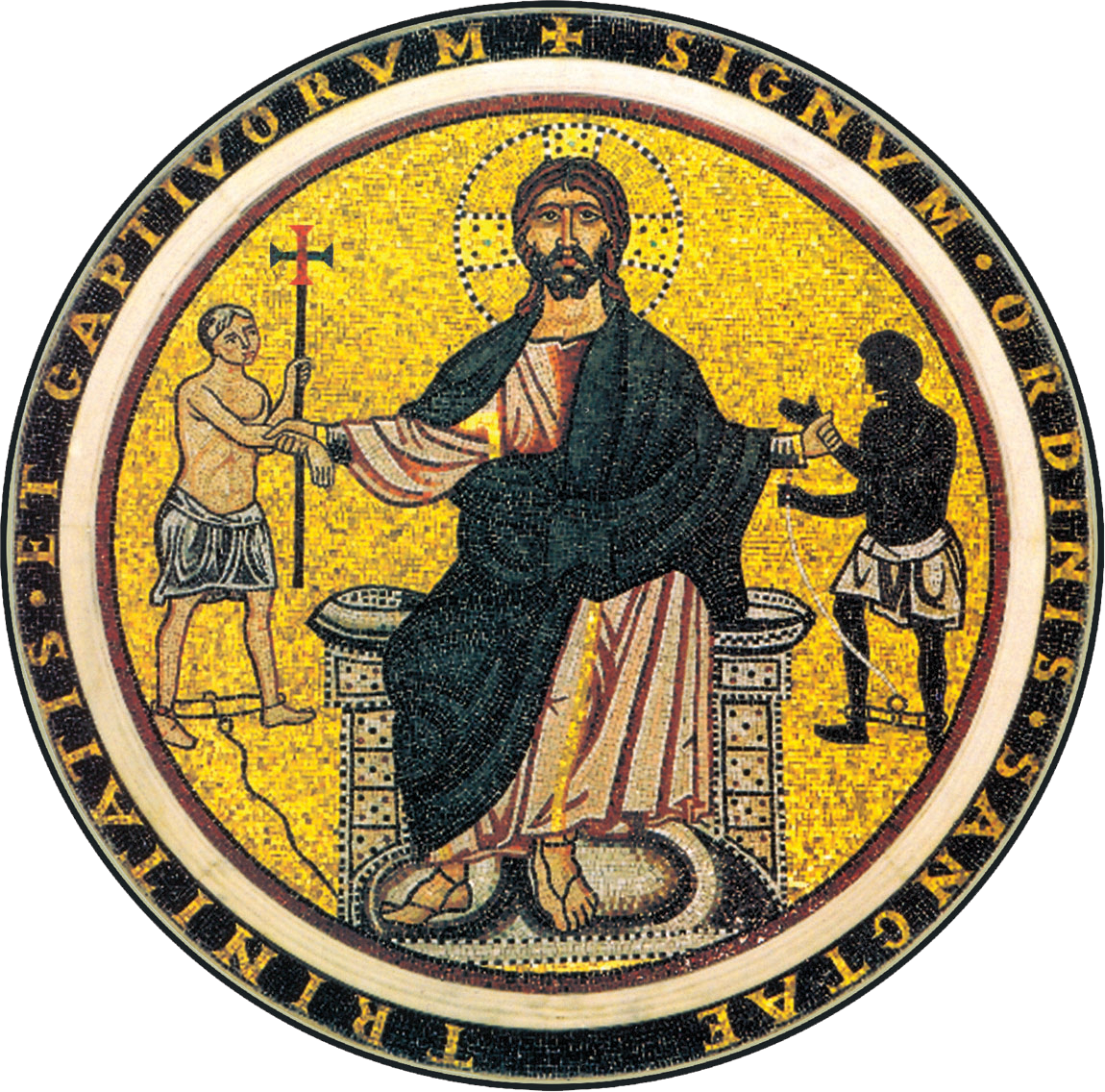St. Thomas in Formis
Type: Non-parish church
Rector: Br. Carmel Gladys Ulrich Dinamona, O.SS.T.
A church closely linked to the history of the Order of the Most Holy Trinity and its founder St. John de Matha
The history of the church of St. Thomas in Formis and the adjacent monastery and hospital is closely linked to the history of the Order of Trinitarian Religious and its founder St. John de Matha. Located on the edge of the Villa Celimontana, the church, dedicated to St. Thomas the Apostle, owes its appellation in Formis to the Latin name of the Claudian aqueduct in front of it (forma Claudia), having been built on the ancient cisterns.
From the Celimontana Square one can clearly see the entrance to the ancient hospital with the medallion of St. John de Matha at the top. Further to the right is the entrance to the former monastery, which had its front built between the arches of the Roman aqueduct. Even more to Roman times and which from its origins represented an archway under the aqueduct. Immediately after Dolabella’s arch is the entrance to the church.
History
The building of the church and ancient monastery dates back to about the 10th century AD, but the exact date is not known because the documents have been destroyed. Accurate records begin from 1209 onward, the date when Pope Innocent III made a gift of the church with adjoining monastery to the Trinitarians, whose founder St. John de Matha decided to establish its headquarters here. The Holy Founder’s first care was to adapt part of the monastery as a hospital to care for the poor, the sick, pilgrims and ransomed slaves, according to the prescriptions of the Order’s rules. After spending the last years of his life in Rome, St. John de Matha died on December 17, 1213, and his remains were interred in the church on the right side of the altar in a marble mausoleum set against the wall. However, his remains were taken to Spain in 1655. St. Francis of Assisi stayed in this monastery several times.
Around 1380, under the pontificate of Urban VI, the Order was forced to leave Rome. The Vatican took over possession of the complex, but hospital operations were discontinued and everything remained in a state of neglect for many years. In 1532 it was decided to restore the church but to save money materials from the nearby hospital were used. In 1571 Pope Pius V returned’ the church and what was left of the hospital and monastery to the Trinitarians, but when the Pope died a few months later, a long dispute began and the Order was unable to retain possession and the complex was entrusted and then sold, only in 1925 the church was restored, but the hospital became the site of the experimental station for agricultural chemistry.
Church
The church appears small and bare today compared to the sumptuousness of its origins, but it retains the cozy and collected atmosphere heralded by the narrow hallway between the Villa Celimontana and the Experimental Institute for Plant Nutrition. On the right side of the facade is the emblem of St. Bernardine of Siena J.H.S. (Jesus Savior of Men). Upon entering, on the right altar is a painting by Aaron of Elder, depicting Innocent III approving the Trinitarian Rule. On the left is Siciolante da Sermoneta’s painting of the Virgin, St. Boniface the Martyr, and St. Francis of Assisi with Pope Boniface IX. On the high altar is a painting by Aaron of Elder depicting Jesus sending St. John de Matha into the world to redeem slaves. On the right altar is a painting by Signora Casorati depicting Our Lady of Good Remedy in the act of handing a purse of money to St. John de Matha. Under the same altar is preserved the distinguished relic of the phalanx of a finger of St. John de Matha. Opposite is the altar of St. Thomas the Apostle who, in the painting, touches the wounds of Christ’s side along with four other apostles.
The mosaic on the portal
of the monastery of
St. Thomas in Formis
Above the entrance to the hospital, one can see a shrine inside which a mosaic, a true symbol of the Order of the Trinitarians, the work of Giacomo and his son Cosimo, Roman marble workers belonging to the school known as Cosmatesca, made at the beginning of the 13th century and representing the vision St. John de Matha had that led him to found the Order: Christ enthroned between two chained slaves, one white on the right and the other black on the left.
Recalling this concept is the inscription surrounding the mosaic: Signum Ordinis Sanctae Trinitatis et Captivorum. That is, Emblem of the Order of the Most Holy Trinity and of the Captives. The cross held in the hands of the white slave and the cross above the mosaic roundel also recall the Order of the Most Holy Trinity. In fact, they are red and blue in color like the cross embroidered on the scapular of Trinitarian religious.
SAINT THOMAS IN FORMIS
Type: Non-parish church
Rector: Br. Carmel Gladys Ulrich Dinamona, O.SS.T.
Mass days and times:
Sundays and holidays at 10:30 a.m.
Contacts:
Tel: 0635420529;
Email : curia@trinitari.org
Where we are located :
Via San Paolo della Croce, 10
00184 Rome (RM)
A spirituality imprinted with history
Learn about our devotions and our Trisagion




